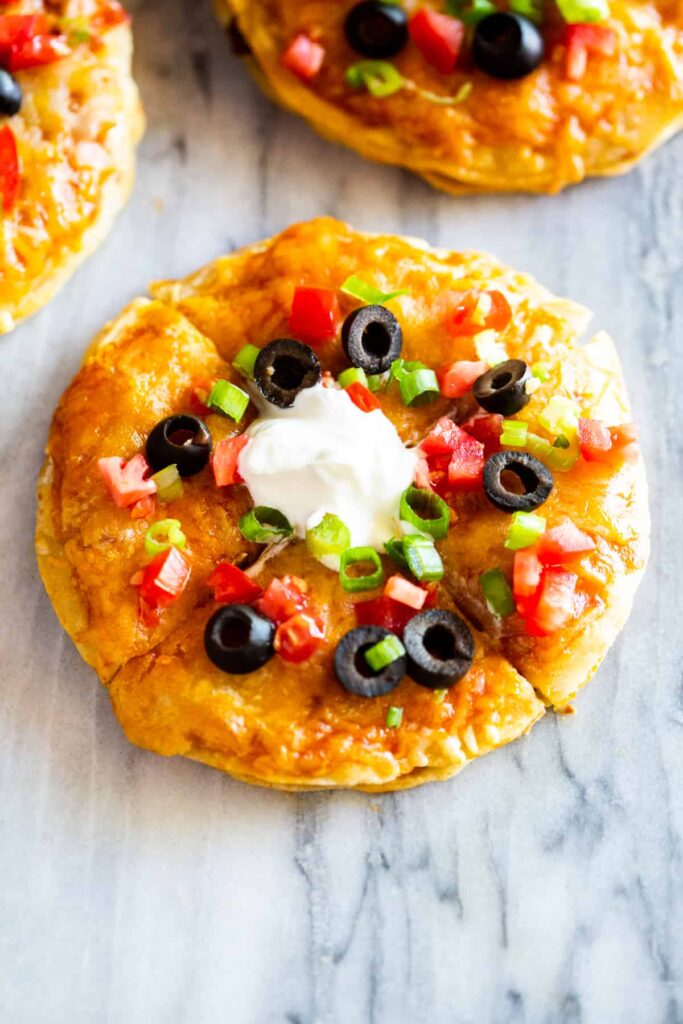Pizza is a global favorite, enjoyed by people of all ages and backgrounds. From thin crusts to deep dishes, every region has its unique take on this beloved dish. What makes these different types of pizza stand out are their distinct flavors, ingredients, and cooking methods.
Exploring the various styles of pizza can be a delightful culinary adventure. This article will guide you through 15 diverse types of pizza, each with its own special characteristics and history. Get ready to discover what makes each slice unique and tempting.

1) Margherita
Margherita pizza is a simple and classic choice. It’s known for its thin crust, fresh ingredients, and balanced flavors.
The base of this pizza is a traditional Neapolitan-style dough. This dough is soft and slightly chewy inside with a crisp, airy crust. Tipo 00 flour is often used for the best texture.
The toppings are minimal but flavorful. It features hand-crushed tomatoes, fresh mozzarella, and basil leaves. These ingredients are seasoned with extra virgin olive oil and a bit of salt.
You bake the pizza at a high temperature to achieve a perfect crust and bubbly cheese. The result is a delicious blend of tangy tomatoes, creamy mozzarella, and aromatic basil.
Margherita pizza is loved for its simplicity and quality ingredients. It’s a great example of how fewer toppings can create an amazing dish.

2) Pepperoni
Pepperoni is one of the most popular pizza toppings in America. You will find it on menus in almost every pizza place. Originating in the United States, it’s made from a mix of pork and beef, seasoned with paprika, garlic, black pepper, and other spices.
There are a few different types of pepperoni you can try. Traditional lay-flat pepperoni slices are the most common. They don’t hold in the grease, which lets the fat render out onto the pizza.
Cup char pepperoni is another favorite. These slices curl at the edges when cooked, creating little grease cups. This type is loved for its crispy edges and flavorful center.
You might also come across pepperoni sticks. These are typically found in two forms: one for slicing, usually longer and thicker, and another for snacking, which is shorter and thinner.
For those who prefer a healthier option, turkey pepperoni is a great choice. It’s lower in fat and often gluten-free, making it suitable for a wider range of diets. Additionally, there are artisanal varieties, such as those made from vegetarian-fed pork, which offer unique and rich flavors.
Pepperoni offers you a classic and savory addition to your pizza, no matter which type you choose.

3) BBQ Chicken
BBQ Chicken pizza offers a mouthwatering mix of tangy and savory flavors. You start by preheating your oven to around 450 degrees F. Then, spread a layer of BBQ sauce over a pre-baked pizza crust or dough.
Next, top the BBQ sauce with shredded, cooked chicken. Use rotisserie chicken for convenience. Add sliced red onions and mozzarella cheese to complete the toppings.
Once you’ve assembled your pizza, bake it in the oven until the cheese melts and becomes bubbly. This usually takes about 15 minutes. The BBQ sauce gives a sweet and tangy taste, while the chicken and red onion add a savory balance.
For extra flavor, you can sprinkle fresh cilantro or add a few slices of avocado after baking. BBQ Chicken pizza is both delicious and easy to make at home.

4) Hawaiian
Hawaiian pizza is a popular choice that combines sweet and savory flavors. It typically features a regular pizza dough base, spread with tomato sauce or sometimes barbecue sauce.
Mozzarella cheese is generously sprinkled on top. The primary toppings include slices of ham and pineapple chunks. Some variations add bacon for extra flavor.
You can also try adding macadamia nuts for a unique twist. The textures of the crunchy nuts and juicy pineapple pair well together.
Baking your Hawaiian pizza at a high temperature, around 475°F (246°C), ensures a crispy crust. Cook it until the crust turns golden and the cheese is bubbly.

5) Four Cheese
Four Cheese, or Quattro Formaggi, is a popular pizza style that combines four different kinds of cheese. Each cheese brings its own unique flavor and texture, creating a rich and savory taste.
The classic Four Cheese pizza typically includes mozzarella, fontina, gorgonzola, and parmesan. Mozzarella melts beautifully, making it a perfect base. Fontina adds a creamy, nutty flavor. Gorgonzola, a blue cheese, provides a tangy punch. Parmesan has a sharp, salty kick.
To prepare a Four Cheese pizza, you should preheat your oven to a high temperature, around 550°F. If you have a pizza stone, preheat it as well. Roll out your pizza dough on a floured surface and place it on a baking tray or stone.
Spread a thin layer of tomato sauce on the dough, then evenly distribute the cheeses. You can add a small drizzle of olive oil on top for extra flavor. Bake until the crust is golden and the cheese is bubbly, usually about 10-15 minutes.
A Four Cheese pizza is perfect for cheese lovers. Its combination of flavors and textures makes it a favorite in many pizzerias.

6) Veggie
Veggie pizzas are a great choice if you want something fresh and healthful. They feature a variety of colorful vegetables, making each slice both delicious and nutritious.
You can start with a classic like a Margherita pizza. It’s topped with tomato, fresh mozzarella, and basil. Simple, yet flavorful.
Another option is a Mediterranean veggie pizza. It typically includes toppings like spinach, feta cheese, olives, and red onions. These ingredients bring a burst of flavor.
For a more unique taste, try a pesto veggie pizza. Spread pesto sauce instead of traditional tomato sauce. Top it with veggies like zucchini, bell peppers, and cherry tomatoes.
You can also explore combinations like mushroom and arugula pizza. The earthy taste of mushrooms pairs well with the peppery arugula.
If you enjoy cheese, a creamy goat cheese and caramelized onion pizza could be your pick. The sweetness of caramelized onions balances the tangy goat cheese.
Veggie pizzas often come with customizable toppings. You can add or swap any vegetables based on your preferences. Think of adding broccoli, artichokes, or even butternut squash.
Experimenting with different veggies can make your homemade pizzas exciting each time you bake them. The possibilities are endless.

7) Meat Lovers
You can’t go wrong with a Meat Lovers pizza if you enjoy hearty and flavorful toppings. This pizza is loaded with various types of meat, making every bite a savory experience.
Start with a traditional pizza dough rolled out to a 12-inch circle. Spread your favorite pizza sauce evenly over the dough, almost to the edges.
Next, sprinkle shredded mozzarella cheese over the sauce. Then, add a mix of meats like pepperoni, sausage, ham, and bacon. The meats should be distributed evenly to ensure every slice has a bit of everything.
Finish with another layer of mozzarella to hold it all together. Bake in a hot oven, usually around 500°F, until the crust is golden and the cheese is bubbly.
Feel free to add some ground black pepper or a sprinkle of Parmesan for extra flavor. Meat Lovers pizza is perfect for those who crave a rich and satisfying meal.

8) Buffalo Chicken
Buffalo Chicken pizza is a spicy and savory delight. It combines the tangy kick of buffalo sauce with the comforting taste of chicken and melted cheese.
To start, you need a good pizza dough, which acts as the base. Spread a layer of ranch or blue cheese dressing over the dough.
Next, layer on shredded cooked chicken that’s been tossed in buffalo sauce. This sauce often includes ingredients like Frank’s hot sauce, melted butter, and sometimes Worcestershire sauce or cayenne pepper.
Sprinkle mozzarella cheese on top of the chicken. For extra flavor, add crumbled blue cheese if you like.
Bake the pizza in a preheated oven until the crust is golden and the cheese is bubbly and slightly browned. For an extra crispy touch, you can broil it for a few minutes at the end.
Buffalo Chicken pizza is perfect for those who love a bit of spice in their meal. Serve it with extra ranch or blue cheese dressing on the side for dipping.

9) Prosciutto & Arugula
Prosciutto and arugula pizza is a classic Italian dish that blends savory and fresh flavors.
You start with a thin, crispy crust. This gives the pizza a nice foundation.
Spread a light layer of tomato sauce on the dough. Add mozzarella cheese evenly on top.
Bake the pizza until the crust is golden and the cheese is bubbly. This usually takes about 6-10 minutes.
After the pizza is out of the oven, add thin slices of prosciutto.
Next, toss fresh arugula with olive oil, lemon juice, salt, and pepper. Then, spread this mixture over the hot pizza.
The combination of salty prosciutto and peppery arugula creates a delightful flavor.
Enjoy this pizza as an elegant dinner option.

10) Sicilian
Sicilian pizza is a unique style that originates from Sicily, Italy. It is known for its thick, spongy crust. You make the dough using bread flour, water, yeast, and olive oil. After mixing, let the dough rise until it doubles in size.
Once the dough has risen, press it into a well-oiled, rectangular pan to create an even layer. Traditional Sicilian pizza dough is airy and soft with a slightly crisp bottom. The dough is then topped with a robust sauce.
The sauce often includes onions sautéed in olive oil, chopped anchovies, tomatoes, and spices like oregano. Unlike many other pizzas, Sicilian pizza usually has less cheese, sometimes using only grated hard cheese sparingly.
Bake the pizza in a hot oven until the crust is golden and the toppings are well-cooked. Sicilian pizza is usually cut into square slices, making it easy to serve. This hearty pizza stands out with its distinct texture and flavorful toppings.
Make sure to enjoy Sicilian pizza fresh from the oven, as it is best when it’s hot and the flavors are fully developed.

11) Greek
Greek pizza is known for its thick, chewy crust. This pizza is cooked in a heavily-oiled pan, which gives the crust a crispy texture on the bottom.
Olive oil is a key ingredient. The dough is usually saturated with olive oil, adding a rich flavor.
Greek pizza toppings often include feta cheese, kalamata olives, green peppers, onions, and tomatoes. These ingredients are common in Greek cuisine.
The sauce is simple, often made from tomato puree mixed with oregano, salt, and olive oil. These spices bring out the flavors of the fresh toppings.
You can bake Greek pizza in a cast iron skillet or a round baking pan. Preheat your oven to 475 degrees Fahrenheit for the best results.
Enjoy the unique taste of Greek pizza with its generous use of olive oil and fresh vegetables.

12) Neapolitan
Neapolitan pizza is a traditional style from Naples, Italy. This pizza is known for its simple yet specific ingredients. The dough is made with finely ground Italian wheat flour, water, salt, and yeast.
San Marzano tomatoes are used for the sauce. These tomatoes grow on the volcanic plains of Mount Vesuvius, giving them a unique taste.
Mozzarella di Bufala Campana or fior di latte is used for the cheese. Mozzarella di Bufala is made from water buffalo milk, while fior di latte comes from cow’s milk. Both provide a rich, creamy flavor.
A key feature of Neapolitan pizza is its thin, soft crust. The crust is puffy and slightly charred at the edges. This crust is achieved by baking in a very hot wood-fired oven for just 60-90 seconds.
Neapolitan pizza is also topped with fresh basil and extra-virgin olive oil. These toppings add fragrance and richness, enhancing the simple ingredients.
Lastly, the pizza must adhere to the standards set by the Associazione Verace Pizza Napoletana to be considered authentic Neapolitan pizza. This ensures consistency in taste and quality.

13) White Pizza
White pizza, also known as Pizza Bianca, is a delicious variation that skips the traditional tomato sauce. Instead, it uses a base of creamy ricotta cheese mixed with herbs and seasonings.
You can find various toppings on white pizza. Common choices include fresh mozzarella, garlic-infused oil, and herbs like oregano and basil. It’s often garnished with grated Parmesan or Romano cheese.
Another popular option is to add vegetables. Spinach, mushrooms, and artichokes all pair well with the creamy base. Some recipes also include pancetta or prosciutto for added flavor.
To make white pizza, start by prebaking the dough at 425 degrees F for about 5 minutes. Then, brush the crust with olive oil and minced garlic. Spread the ricotta mixture evenly and layer your chosen toppings.
White pizza can be a sophisticated and tasty option for pizza night. It offers a delightful mix of creamy and savory flavors without the heaviness of tomato sauce.
If you’ve never tried white pizza, it’s time to give it a shot. It’s a versatile dish that you can customize to your taste, whether you prefer simple cheese or a variety of toppings.

14) Mexican
Mexican pizza blends traditional pizza with Mexican flavors. You start with a regular pizza crust or tortillas as the base.
Spread refried beans and tomato sauce evenly over the crust. Add cooked chorizo for a spicy touch.
Top with shredded cheese, such as cheddar or queso. You can also add other toppings like bell peppers or jalapeños for extra flavor.
After assembling, bake the pizza at around 375°F to 400°F until the cheese is melted and bubbly.
Finish by garnishing with fresh cilantro or a drizzle of salsa.
Mexican pizza offers a delicious fusion of Italian and Mexican cuisines.

15) Pesto Chicken
Pesto Chicken pizza offers a fresh twist on the classic pie. You start with a base of pizza dough, which can be homemade or store-bought. Then, spread a generous layer of pesto sauce evenly across the dough, leaving a small border around the edges.
Add mozzarella cheese as the first topping layer. You can also mix in other cheeses like ricotta or fontina for extra flavor. Next, place cooked, sliced chicken pieces on top of the cheese.
For additional taste, consider adding tomatoes, onions, or mushrooms. These veggies complement the pesto and chicken well. Drizzle a bit of olive oil over the toppings before baking.
Preheat your oven to a high temperature, around 475-500°F. Bake the pizza until the crust turns golden brown and the cheese bubbles and melts. This should take about 12-20 minutes.
Finally, once the pizza is out of the oven, let it cool briefly before slicing and serving. Enjoy your Pesto Chicken pizza hot, and don’t forget to add fresh basil for a burst of flavor.
History of Pizza
Pizza has ancient roots with influences from various cultures. It evolved significantly in Italy, especially in Naples, and gained global popularity over centuries.
Origins of Pizza
Pizza’s story begins with ancient flatbreads. Early forms of flatbreads were made by ancient civilizations like the Greeks and Egyptians. These societies cooked flatbread on hot stones and added simple toppings.
The Persians in the 6th century BC made a primitive pizza by baking flatbreads topped with cheese and dates on their shields. This shows how pizza-like foods emerged in different regions.
In Italy, the Romans had panis focacius, similar to modern focaccia. They would add various toppings, which laid the foundation for what we recognize as pizza today.
Evolution of Pizza Styles
The transformation into modern pizza began in Naples, Italy. By the 1700s, Neapolitan street vendors sold pizza with toppings like oil, garlic, and anchovies.
In 1889, Queen Margherita of Italy visited Naples. A pizza with tomatoes, mozzarella, and basil was created in her honor. This was known as the Margherita pizza, now a classic.
The 20th century saw pizza spreading globally. Italian immigrants introduced it to the United States, where it became massively popular and various styles like New York and Chicago deep-dish emerged.
Throughout history, pizza has adapted to local tastes and ingredients, making it a beloved dish worldwide.
Regional Variations
Pizza styles from different regions have unique characteristics. Italian pizzas range from thin and crispy to thick and fluffy, while American pizzas offer varied toppings and crusts. Other global styles also provide many unique flavors and techniques.
Italian Pizza
Italian pizzas are diverse. The Neapolitan pizza is known for its thin, chewy crust. It uses simple ingredients like tomatoes, mozzarella, and basil. Roman pizza comes in two main types: pizza al taglio and pizza tonda. Pizza al taglio is rectangular, served by the slice, and has a thick, airy crust. Pizza tonda is round, with a thin and crispy crust. Sicilian pizza, or sfincione, has a thick, spongy base, often topped with onions, anchovies, tomatoes, and cheese.
American Pizza
American pizza styles are just as varied. New York-style pizza has a large, foldable slice with a crispy edge. It uses simple toppings like mozzarella and tomato sauce. Chicago-style deep-dish pizza has a thick, buttery crust, with cheese and toppings stuffed inside a high-edged pan. St. Louis-style pizza features a crisp, cracker-like crust and uses Provel cheese, which is a mix of provolone, Swiss, and white cheddar. California-style pizza is all about unusual toppings, including ingredients like arugula, goat cheese, or even smoked salmon.
Other Global Styles
Outside Italy and the U.S., pizza takes on many forms. In South Korea, pizzas often feature sweet potato, corn, and even bulgogi (marinated beef). Japan offers unique toppings like mayo, eel, and squid. In India, pizzas might have paneer, tandoori chicken, or curry. Australia enjoys pizzas with ingredients such as BBQ sauce, shrimp, and even eggs. These regional variations provide a wide range of tastes, reflecting local culinary traditions and preferences.
Pizza Making Techniques
Creating a delicious pizza involves several steps, starting with making the dough, selecting the right toppings and sauces, and finally baking it properly to achieve the perfect crust and flavors.
Dough Preparation
Ingredients:
To make the dough, you’ll need flour, water, yeast, salt, and a bit of sugar.
Steps:
- Combine the flour, yeast, water, oil, salt, and sugar into a smooth and pliable dough.
- Knead the dough until it becomes elastic and stretchy. This could take about 10 minutes by hand or 5 minutes with a dough mixer.
- Allow the dough to rise. Place it in a bowl covered with a damp cloth and let it ferment for 1-2 hours. This will give the dough a light, airy texture.
Tips:
- Using bread flour or Italian “00” flour can enhance the texture of your pizza.
- Be careful with the salt; add it away from the yeast to prevent hindering the yeast’s activation.
Toppings and Sauces
Base Sauce:
The base of your pizza can be tomato sauce, pesto, or even a simple olive oil and garlic mix.
Cheese:
Mozzarella is classic, but you can also use Parmesan, Provolone, or a mix of cheeses for different flavors.
Toppings:
- Vegetables: Think about bell peppers, onions, mushrooms, or olives.
- Proteins: Pepperoni, sausage, chicken, or ham can add heartiness.
- Herbs and Spices: Fresh basil, oregano, and red pepper flakes can elevate the flavors.
Assembly:
- Spread a thin layer of your chosen sauce evenly over the dough.
- Add cheese next, making sure it covers the sauce completely.
- Arrange your toppings evenly to ensure each bite has a good mix of flavors.
Baking Methods
Preheat Oven: Your oven should be very hot, typically between 450-500°F (230-260°C).
Pizza Stone or Steel: Place a pizza stone or steel in the oven while it preheats. This helps to achieve a crisp, golden crust.
Baking Time:
- Slide your assembled pizza onto the preheated stone or steel using a pizza peel.
- Bake for 8-10 minutes, keeping an eye on it to ensure it doesn’t burn. The crust should be golden, and the cheese should be bubbly and slightly browned.
Alternative Methods:
- Grill: You can also grill your pizza for a smoky flavor. Preheat your grill to high, then cook the pizza on a pizza stone.
- Wood-fired Oven: If you have access to a wood-fired oven, it can impart a unique, authentic flavor to your pizza. Preheat the oven to around 900°F (480°C) and bake for about 2 minutes.
By mastering these steps, you’ll be well on your way to making delicious homemade pizzas.









